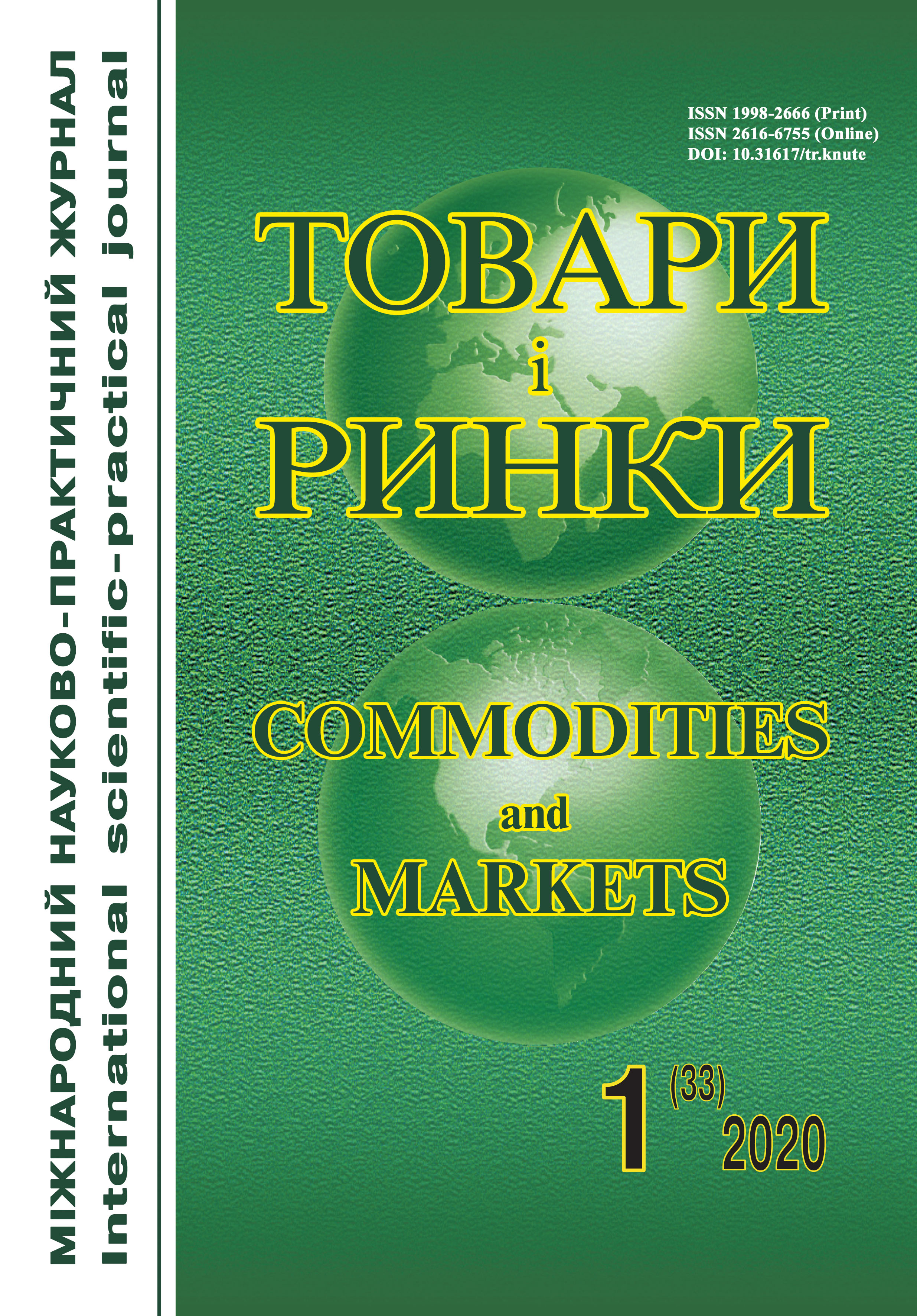Paper recycling: factors of influence
DOI:
https://doi.org/10.31617/tr.knute.2020(33)01Keywords:
recycling, waste paper, factorsAbstract
In an environment of climate change economy, paper recycling is an example of sustainable production in the context of policies adopted and the solutions sought in this area. This raises the current question of the factors that determine and influence the process and our interest in research. The following groups of factors have been identified and systematized in the study: environmental; operational and economic; legal and regulatory. The impact they have on the recycling of waste paper (WP) has been identified in order to facilitate and improve the quality of the products obtained.
References
Bikov, P. (2012). Modifikatsiya na vlaknesti materiali pri proizvodstvo na hartiya. Avtoref [Modification of fibrous materials in paper production]. HTMU – Sofiya, s. 49 [in Bulgarian].
Blasius, K., Manoiu, A. (2010). Improving the cost – effectiveness of white top lineboard based on recycled pulp. Chem. Technol, 44 (10), 489-497 [in English].
Bobu, E., Iosip, A., Ciolacu, F. (2010). Potential benefits of recovered paper sorting by advanced technology. Cellulose Chem. Technol, 44 (10), 463 [in English].
Bontoux, L., Leone, F., Nicolai, M., Papameletiou, D. (1996). The recycling industry in the European Union: Impediments and Prospects. Luxembourg [in English].
Derksen, L., Gartrell, J. (1993). The Social Context of Recycling. American Sociological Review. Vol. 58, Issue 3, pp. 434-442 [in English].
Doklad za sastoyanieto na razdelnoto sabirane i retsiklirane na otpadatsi ot opakovki, izgotven na baza postapili oditorski dokladi [Report on the assembly of separately collected and recycled packaging waste prepared on the basis of received audit reports]. (2012). Ministerstvo na okolnata sreda i vodite. s. 3 – 16. Retrieved from http://www3.moew.government.bg/?show=top&cid=553 [in Bulgarian].
Eldred, N. (2008). Technical Challenges to Management. Chapter 13 from Package Printing. Graphic Arts Technical Foundation [in English].
Ervasti, I. (2006) Granitsi na retsiklirane na otpadachnata hartiya [Waste paper recycling limits]. Tseluloza i hartiya. № 1. ITSH – AD, Sofiya, s. 17-19 [in Bulgarian].
Granitsi na retsiklirane na hartiyata – doklad na konferentsiyata v Puerto de la Cruz. COST programa E48 [Paper recycling limits – report from the Puerto de la Cruz conference. COST program E48]. (2007). Tseluloza i hartiya. №12, s. 17 [in Bulgarian].
Hopper, J., Nielsen, J. M. (1991). Recycling as altruistic behaiviour. Normative and Behavioral Strategies to Expand Participation in a Community Recycling Program. Environment and Behavior, Vol. 23, 2, pp.195-220 [in English].
Kirova – Blazheva, H. (2010). Za hartiyata, koyato izhvarlyame [About the paper we throw away]. BDS Kompas, 2, s. 22-23 [in Bulgarian].
Kulkarni, A. G. (2001). Utilisation of Recycled Fibre – An Overview. Interaction meeton use of recycled fibre in paper & newsprint, 12th April, Saharanpur, India, pp. 1-18 [in English].
McKinney, R. W. J. (1995). Technology of paper recycling. Ed. Blackie Academic & Professional, an imprint of Chapman & Hall [in English].
Merrild, H., Damgaard, A., Christensen, T. (2008). Life cycle assessment of waste paper management: The importance of technology data and system boundaries in assessing recycling and incineration. Resource, Conservation and Recycling, Vol. 52, Issue 12, pp. 1391–1398 [in English].
Miranda, R., Blanco. A. (2010). Environmental awareness and paper recycling. Cellulose Chem. Technol., 44 (10), pp. 431-449 [in English].
Miranda, R., Bobu, E., Grossman, H., Stawicki, B., Blanco, A. (2010). Factors influencing a higher use or fecovered paper in the European paper industy. Cellulose Chem. Technol. 44(10), pp. 429 [in English].
Nazhad, M. (2005) Recycled fiber quality – a Review. Journal of Industrial and Engineering Chemistry. 11(3), pp. 314, 327. Retrieved from: http://www.cheric.org/PDF/JIEC/IE11/IE11-3-0314.pdf [in English].
Nedeva. S. Kragla masa – Round table. Tseluloza i hartiya [Round table]. Sofiya: ITSH AD, 2012. XLII, № 2, s.17 [in Bulgarian].
Pichtel, J. (2014). Recycling Solid Wastes: In: Waste Management Practices Municipal, Hazardous, and Industrial, Second Edition: CRC Press, pp. 125-160. Retrived from http://www.crcnetbase.com/isbn/978-1-4665-8518-8- [in English].
Potucek F., Cešek, B., Milichovský, M. (2013). Effect of adding secondary fibers to kraft pulp on strength properties and air resistance. Cellulose Chem. Technol. 47 (5-6), pp. 455 – 460 [in English].
Reddy, P. J. (2011). Waste reduction and recycling, In: Municipal Solid Waste Management Processing –Energy Recovery –Global Examples: CRC Press, pp. 38-57. Retrivied from http://www.crcnetbase.com/doi/abs/10.1201/b11500-4?prevSearch=%255BFulltext%253A%2Brecycling%2Bpaper%255D&searchHistoryKey [in English].
Ristola, P. (2012). Impact of waste-to-energy on the demand and supply relationships of recycled fibre. Doctoral dissertation. VTT Technical Research Centre of Finland [in English].
Saobshtenie na Komisiyata do Evropeyskiya parlament i do Saveta Initsiativa za surovinite – posreshtane na nashite osnovni potrebnosti ot rastezh i rabotni mesta Evropa [Communication from the Commission to the European Parliament and the Council. Raw Materials Initiative – Meeting our basic growth and jobs needs in Europe]. Retrieved from http://eur-lex.europa.eu/LexUriServ/LexUriServ.do?uri=COM: 2008:0699:FIN:BG:PDF [in Bulgarian].
Singh, A., Yadav, R. D., Kaur, A., Mahajan, R. (2012). An ecofriendly cost effective enzymaticmethodology for deinking of school waste paper. Bioresource Technology: Elsevier Ltd, Vol. 120, pp. 322, Retrieved from http://www.sciencedirect.com [in English].
Smolin, A., Koleshkov, A. (2006). Osnovnaye prichinay snizheniya bumagoobrazuyushtih svoystv makulaturnayh volokon pri tsiklichnom ispolyzovanii [The main reasons for the reduction of paper-forming properties of waste fiber during cyclic use]. Tsellyuloza. Bumaga. Karton. № 6, s. 57 [in Russian].
Spilka, М., Kania, A., Nowosielski, R. (2008). Integrated recycling technology. Journalof Achievements in Materials and Manufacturing Engineering, Gliwice: International OCSCO World Press,. 31 (1), pp. 97. Retrieved from http://www.journalamme.org/papers_vol31_1/31114.pdf [in English].
Stefanov, D. (2001). Opakovka na stokite [Packaging of goods]. UI – Varna, 2001, s.214[in Bulgarian].
Stefanov, D. (2010). Opakovkata na stokite i opazvane na okolnata sreda [Packaging of goods and environmental protection]. –V: Sbornik s dokladi ot XI Nauchna konferentsiya s mezhdunarodno uchastie "Kachestvo i bezopasnost na stokite", Varna: Nauka i ikonomika, s. 271 – 273 [in Bulgarian].
Talaeipour, M., Roshdi, L. (2010). Deinking the mixed office waste paper with surfactants and cellulase enzyme at neutral PH. Renewable natural resources research. 1 (2), pp. 72. Retrieved from http://www.sid.ir/en/ [in English].
The Future of Paper Recycling in Europe: Opportunities and limitations – The final report of COST ACTION E48 “The limits of paper recycling”. (2010). Ed. Bartek Stawicki & Barry Read [in English].



